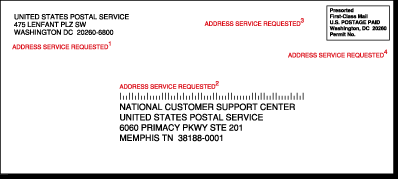A tenant moves out, leaving the home trashed, and doesn’t leave their new address. A deadbeat parent skips out on child support. Your former roommate moved out in the middle of the night without paying her share of the bills. There are any number of reasons why you might need to find someone’s new address and either not want them to know or not be able to ask them.
So what do you do when you need to find out someone’s forwarding address? There are several things you can try.
1. Ask mutual friends/acquaintances.
If you share mutual friends or acquaintances with the person you’re looking for, you can try asking those people if they know the person’s new address. You’ll likely want to move quickly on this, however. If they don’t want you to find them, they’ll probably tell those people not to tell you.
2. Send a letter.
You might be wondering why, or even where, you would send a letter when you’re trying to get their address. Sending a letter to the address that you do know can often get you the one you don’t know. There are two ways you can do this:
1. Return Service Requested: For this, you’ll need to type everything on the envelope. Above the recipient’s address, with about one line space between them, type “RETURN SERVICE REQUESTED” (without quotes). What this does is notify the post office that if the person no longer lives at the address provided on the envelope, you want the mail returned with the new address. If the person forwarded their mail, this will result in your envelope being returned to you with a yellow sticker with the new address on it. If they didn’t forward their mail, it will come back to you with nothing. You’ll want to use this method if you don’t want the person to know you’re looking for them.
2. Address Correction Requested: This is essentially the same as the previous method, but your mail will be forwarded to the recipient, and you’ll get a card that tells you their new address. This method is good for when you don’t care if they know you’re trying to find them. In this case, you do the same thing as the previous step, but write or type “Address Correction Requested” (without quotes).
3. Do a public records search online.
Numerous websites offer to provide a ton of information on people. This site allows you to get someone’s current address. You can use a variety of methods to search for someone, including:
- Name
- Phone number
- Last known physical address
This allows a lot of leeway in confirming that the person you find is the person you’re looking for.
4. Contact the alumni office of the college they attended.
This is usually more successful if you went to the same school, and may not be successful at all. But if the person is heavily involved in alumni activities, it may help you find a person’s change of address.
5. Hire a private investigator or people finding agency.
This can be a very expensive option, so it’s best reserved for a situation where you truly need to find the person, and the monetary reward of finding them will far outweigh what you spend on this. In a situation like that, however, this option has several benefits:
- They have more resources than you do, allowing them to access records that you can’t.
- They can dedicate more time and effort to the search than you can.
- They can locate and even contact the person without mentioning who’s looking for them, so that your privacy is protected.
6. Ask the post office.
According to the FOIA, the post office can tell you the forwarding address under the following circumstances:
1. If you already have the old address.
2. If a government agency is requesting it.
3. If it’s for a process server or other person serving the legal process meeting certain requirements.
4. By court order.
It’s not as hard as you might think to find out someone’s forwarding address. The cost of a postage stamp, copies of paperwork, or a quick online public records search, can usually find someone’s new address. If all else fails, you can discuss your situation with a lawyer and determine if there might be other options to help you do what you need to do.

